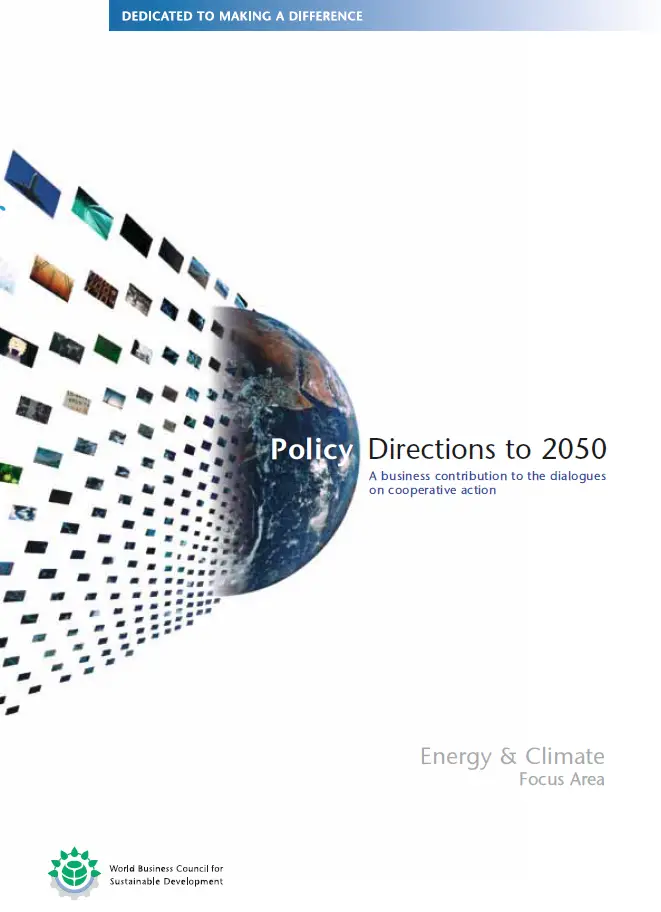Policy Directions to 2050: A business contribution
Published: May 17, 2007

Policy Directions to 2050: A business contribution to the dialogues on cooperative action asserts that the only way to combat climate change is through decisive, concerted and sustained actions between governments, businesses and consumers.
The publication identifies policy options to sustain economic growth while transforming the ways we access, produce and consume energy. Presented as an illustrative roadmap from which routes must be chosen, it explores policy ideas and concepts for the transition to a low greenhouse gas (GHG) economy.
It calls for the development and deployment of leading-edge technologies through partnerships and incentives and an approach to mitigate long-term market risk and deliver secure benefits for large-scale, low-carbon, new-technology projects.
The publication puts forth four policy priorities:
- Establishing by 2010 a quantifiable, long-term (50-year), global emissions pathway for the management of GHG emissions;
- Closing the gap that will exist after 2012 (when the Kyoto Protocol expires), using the existing international framework as a basis, and modifying it to build up from local, national, sector or regional programs;
- Building robust programs at the national level, and in support of the international pathway. Such programs would include encouraging energy efficiency; broadening the range of fuels in the transport sector; and country-wide boosting of awareness and incentives for consumers across all levels of society toward low-carbon products, services and lifestyles;
- Developing and commercializing a number of low- and zero-GHG technologies over the coming decades. These will require supporting policies and programs to address technical and cost challenges.
Policy Directions to 2050 explores and introduces ideas for a new international framework and addresses key policy issues within power generation, industry and manufacturing, mobility, buildings and consumer choices, asking three basis questions: What is needed? Why is it needed? How could it work?
Through this approach, the WBCSD hopes to stimulate the debate by contributing business insights that can help encourage the required technological and behavioral changes.
The publication is the third in the Energy and Climate series and reflects the WBSCD’s continued engagement with governments in the search for solutions. Earlier publications included Facts and Trends to 2050 and Pathways to 2050, which sought to create a basis for dialogue and action by translating the scale and complexity of these challenges into simple, illustrative pathways to 2050.
This trilogy has helped a variety of stakeholders think about the ways in which energy flows through the global economy and affects the climate.
Presentation
- Watch a presentation of Policy Directions by David Hone at UNFCCC’s session of the Subsidiary Bodies in Bonn, Germany (May 7-18, 2007)